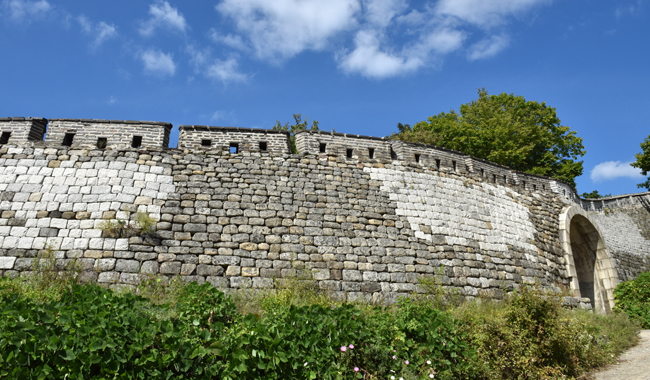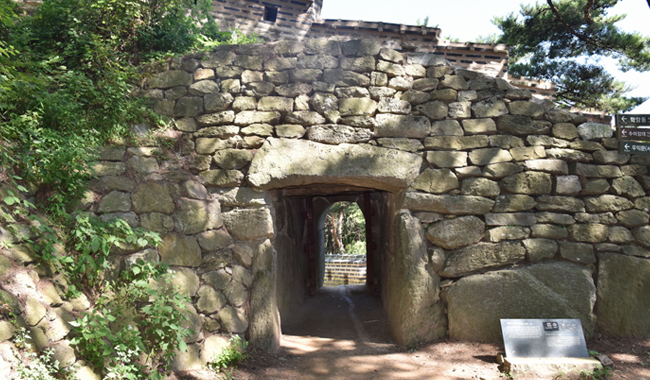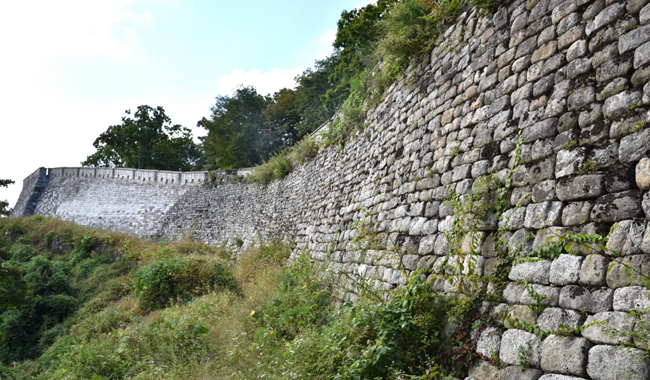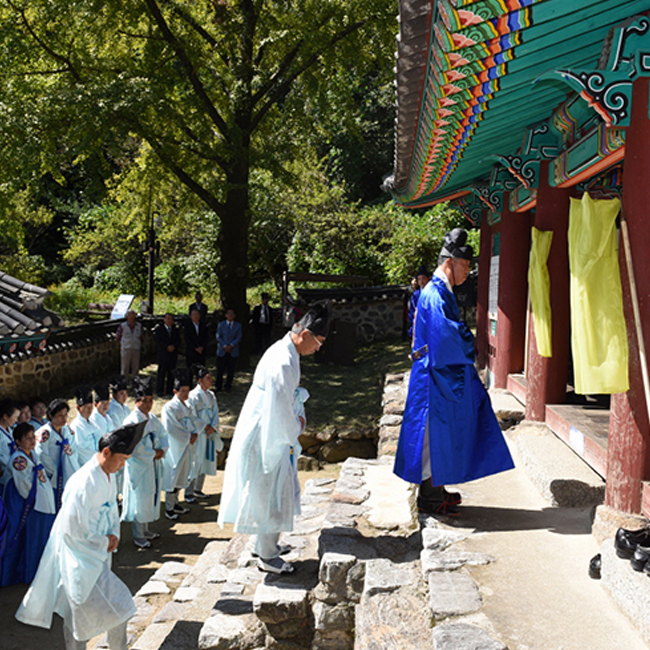Discover Korea's World Heritage
Namhansanseong
Namhansanseong, Emergency Capital of the Joseon Dynasty
Namhansanseong served as the defensive bastion and temporary capital in case of emergencies during the Joseon era. The mountain fortress provides a comprehensive illustration of various military skills that show the changes of the weapons system in different periods of time in East Asia.
The fortress is 25 kilometers southeast from the center of Seoul. The inside the walls, the basin is large enough to function as a city and to offer shelter for the king and the people in wartimes.
The palace inside the fortress was the only emergency palace to be equipped with a shrine for royal ancestors (Jwajeon) and an altar dedicated to the gods of earth and harvest (Woosil). The fortress acted as a temporary capital to play an important role in times of national emergency.
Model of Korea’s Fortress Construction Techniques
Placed 480 meters above sea level, the fortress walls stretch more than 11 kilometers across the rugged mountain terrain. Due to this geographical condition, not even a large number of troops could easily attack the fortress. Inside, the fortress is spacious and flat, with more than 80 wells and 45 ponds providing abundant water resources, making it possible to accommodate tens of thousands of troops.
It was first built in the 7th century. With the development of new weaponry between the 16 and 18th centuries, the fortress was repeatedly rebuilt and expanded to respond effectively to new artillery and long-distance weapons. It is a striking illustration of different development stages of fortress construction techniques.

① Before the Joseon Period - Castle rocks, shaped like corn kernel with its corners rounded out, were heaped up compactly.
② King Injo Period (Early 17th Century, Wonseong Fortress) - Castle rocks, cut in a rectangular shape, were stacked evenly.
③ King Sukjong Period (Late 17th Century, Hanbongseong Fortress) - Smaller rocks were mixed in between large rocks and castle rocks.
④ King Yeongjo Period (Mid-18th Century, Sinnamseong Fortress) - Shapes and corners of rocks were precisely aligned to build a solid fortress.
Namhansanseong, a Natural Fortress
- Yeojang, a wall that enables soldiers to hide themselves and attack the enemy
Behind this low wall on top of the main fortress, soldiers were able to conceal themselves, unnoticed by the enemy, and shoot arrows or guns. Records state that the fortress has 1,944 Yeojang. Source: Cultural Heritage Administration

- Ammun, a hidden gate for transporting troops and supplies
There are 16 Ammun in the fortress. It is a small gate that was secretly built in a spot that was hard to be seen by the enemy. Soldiers in siege used it to ask for help in secret. The gate was also used to transport food. Source: Cultural Heritage Administration

- Ongseong, where Ammun was built and artillery units were positioned
Ongseong refers to another wall built around a gate or wall to provide stronger protection. Five Ongseong are positioned in important locations in the fortress, with Poru (artillery bastion) installed at the end. Source: Cultural Heritage Administration

Jehyang Continues to This Day
Jehyang (memorial ritual) is a traditional ceremony that has been performed to this day since the Joseon era. Sungryeoljeon Shrine keeps the memorial tablets of King Onjo, the founder of the Baekje Kingdom, and Lee Seo, who was in charge of the construction of Namhansanseong Fortress. To pay tribute to the two ancestors, jehyang is carried out at the shrine on the fifth day of the ninth lunar month every year.
Hyeonjeolsa Shrine was built to comfort the souls of three patriotic scholars, Yun Jip, Hong Ik-han and Oh Dal-je, and to praise their loyalty. The three vehemently opposed to surrender during the second Manchurian invasion in 1636. They were taken to the Qing Dynasty of China and put through severe hardships before being beheaded. Jehyang is performed at the shrine on the tenth day of the ninth lunar month every year.
Source: Cultural Heritage Administration



